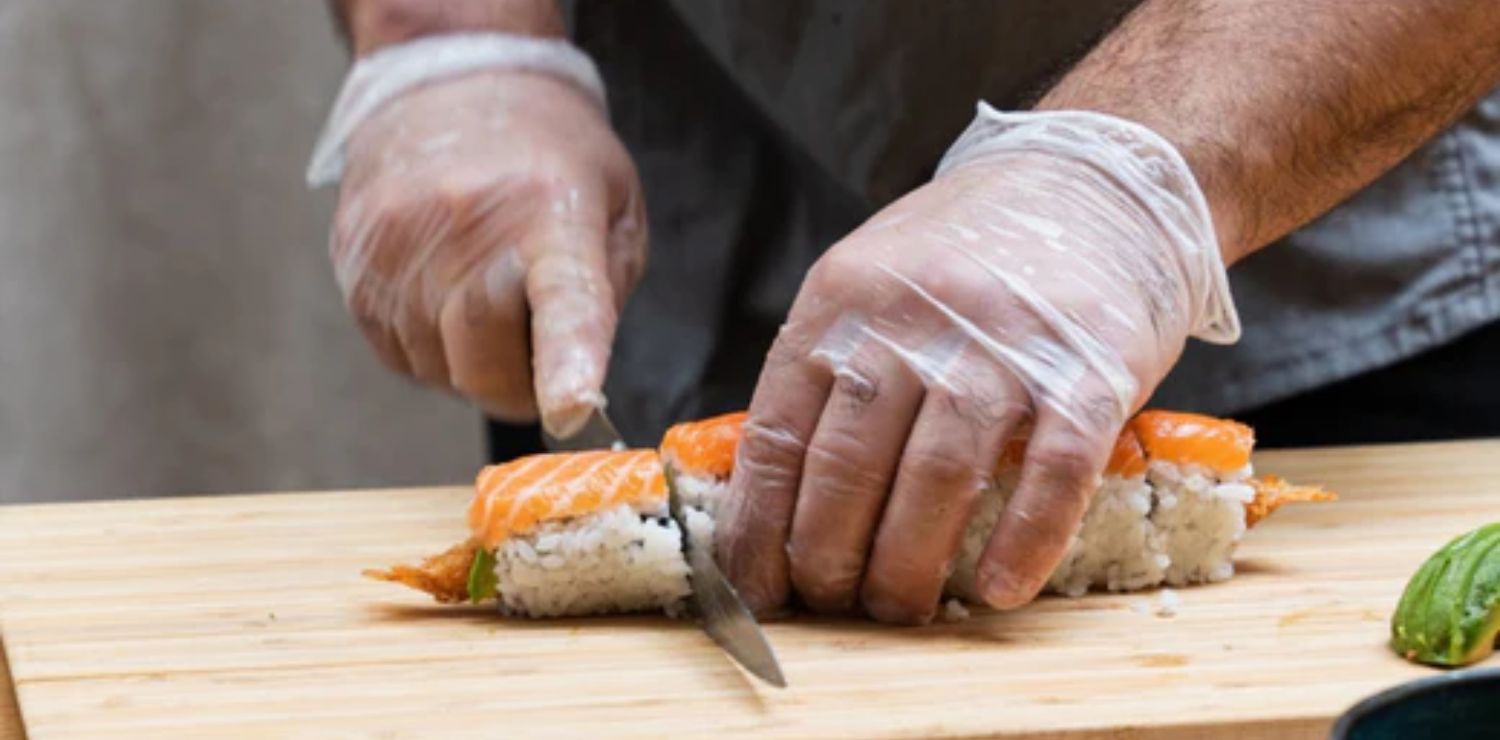The Various Types of Japanese Knives for Fish
Fish slicing is an art in itself, and to execute it with precision and delicacy, it is crucial to utilize the right tools. The Japanese knives are known for their quality and their exceptional sharpness In this article, we present the features of Japanese knives suitable for fish slicing and guide you to choose the ideal knife for your kitchen needs.
The various types of Japanese knives for fish
Japanese knives are crafted with care and precision, which gives them unparalleled slicing quality. For fish slicing, there are several types of Japanese knives, each having its specifics and advantages.
The santoku knife
The santoku knife is a Japanese kitchen knife designed specifically for slicing fish. Its blade long and narrow allows making thin and regular slices, ideal for preparing sushi and sashimis. Its unilateral edge eases the slicing of fish fillets without damaging their delicate flesh.
The santoku is generally forged in steel , which offers exceptional sharpness but requires regular maintenance. There are also models in stainless steel that resist better corrosion and are easier to maintain.
The chef's knife
The chef's knife is another type of Japanese knife designed for fish slicing. Its broad and thick blade is ideal for slicing and deboning firm flesh fish. Its unilateral edge allows precisely separating the skin and bones without damaging the flesh.
The deba is often forged in carbon steel for optimal sharpness, but there are also models in stainless steel for better resistance to corrosion and easier maintenance.
The criteria to consider when choosing your Japanese knife for fish slicing
To choose a Japanese knife for fish slicing, consider these criteria to make the best choice.
The size and shape of the blade
The size and shape of the blade of the knife are essential for a precise and efficient slicing. For fine flesh fish, opt for a chef's knife with a long and narrow blade. If you mainly work with firm flesh fish, a santoku knife with a broad and thick blade will be more suitable.
The type of steel
The choice of steel depends on your priorities regarding sharpness and maintenance. Damascus offers exceptional sharpness, but it is sensitive to corrosion and requires regular maintenance. The stainless steel is more resistant to corrosion and easier to maintain, but it offers slightly inferior sharpness.
The knife handle
The handle of the knife should be comfortable to hold and offer a good grip. Japanese knives usually have wooden handles, which are both ergonomic and aesthetic. Ensure to choose a handle suited to the size of your hand for optimal use.
Maintenance of Japanese knives for fish slicing
To preserve the quality and the sharpness of your Japanese knives, regular maintenance is essential. Here are some tips to take care of your knives:
- Regularly sharpen the blade using a sharpening stone adapted to the steel's hardness
- Clean the knife with warm water and soap after each use, ensuring to dry the blade properly to prevent the appearance of rust.
- Store your Japanese knives away from moisture, preferably in a knife block or a special case.
- If you own a knife in carbon steel, regularly oil the blade to protect it from corrosion.
In conclusion, the Japanese knives are indispensable tools for executing precise and delicate fish slicing. The chef's knife and the santoku knife are specifically designed for this task, and it is essential to select the right knife according to the size, shape of the blade, and type of steel. Do not forget to regularly maintain your Japanese knives to preserve their quality and exceptional sharpness.
FAQ
What type of Japanese knife is best suited for cutting fish?
The Santoku knife is the type of Japanese knife most adapted to cutting fish. It is typically lightweight, easy to handle, and very well balanced.
What are the advantages of choosing a Japanese knife for fish slicing?
Japanese knives are regarded as very precise and versatile tools. They offer a clean and precise cut that is ideal for handling delicate unprocessed foods such as fish. Most Japanese knives are made of high-quality stainless steel that can withstand moisture and acids. Additionally, some models come with a titanium coating that offers superior resistance to corrosion and rust.
What maintenance should be performed on a Japanese knife?
It is crucial to regularly maintain your Japanese knife to maintain its quality and lifespan. Clean your knife with a damp sponge and soap after each use. Do not use abrasive products or cleaners containing acids or alkalis as they may damage the blade. After cleaning, thoroughly dry your knife with a soft cloth and store it in a dry place, out of direct sunlight.
What precautions should be taken with a Japanese knife?
First off, make sure to always handle your knife carefully when cutting something. Use a wooden or synthetic cutting board to protect your table and hands. Do not use your knife on hard surfaces such as stone or metal as it may damage the blade. When storing your knife, always place it in a storage block or protective sheath to prevent accidents.
How to find the best Japanese knife for cutting fish?
There are several criteria to consider when choosing a good Japanese knife for cutting fish. Firstly, verify if the blade is made of high-quality stainless steel to ensure its durability and resistance to acids or moisture. Then, look for a well-balanced and easy-to-handle model for more practical and safe handling. Lastly, we recommend you check out reviews from other users to find a product that meets your needs.


How to Easily Make Sushi in Just a Few Moments
Exploring Culinary Delights: Starred Restaurants in Japan